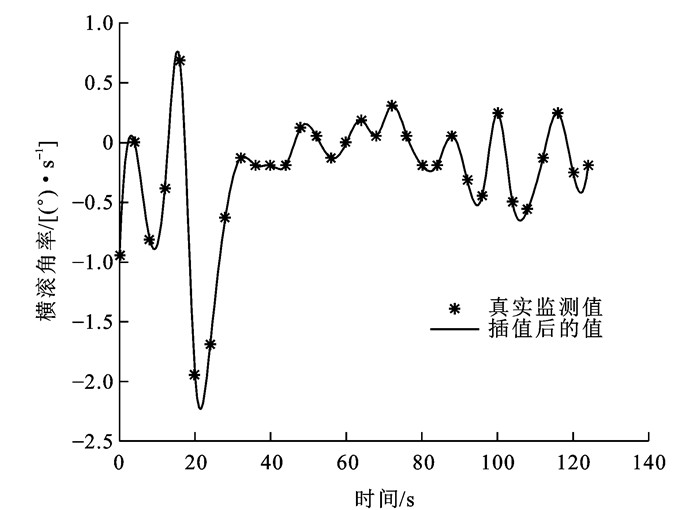Early warning method for heavy landing of civil aircraft based on real-time monitoring parameters
-
摘要: 针对目前民用飞机重着陆事件的识别只能通过飞行员事后上报和维修人员被动检查的问题,提出了一种基于实时监测参数的民用飞机重着陆预警方法;分析了飞机重着陆的影响因素,在对快速存取记录器数据预处理的基础上,采用灰色关联度分析方法,从飞机重着陆相关的52个监测参数中提取了26个特征监测参数;以着陆质量、垂直加速度、垂直下降率和俯仰率等4个重着陆评价参数作为预测参数,26个特征监测参数作为输入,建立了基于长短期记忆网络的飞机重着陆预测模型;采用重着陆案例数据对预测模型进行训练,分析了飞行高度区间、输入输出步长对模型预测精度的影响,进而对模型进行了优化;在案例验证中引入混淆矩阵验证了模型的预测效果。研究结果表明:利用长短期记忆网络所建立的民用飞机重着陆预警方法有效利用了实时监测参数中反映重着陆趋势的信息,实现了飞机的重着陆预警,在提前8 s预警的情况下,预测精度达到了98%,平均绝对误差仅为0.018 3,可为飞行员提供足够的时间裕度采取措施,避免重着陆的发生。Abstract: It was considered that the heavy landing events of civil aircraft can only be reported by pilots or checked passively by the maintenance personnels afterward at present, an early warning method for the heavy landing of civil aircraft based on real-time monitoring parameters was proposed. The influencing factors in heavy landing were analyzed, and on the basis of the preprocessed data of a quick access recorder (QAR), the grey relational analysis (GRA) was employed to extract 26 feature monitoring parameters from 52 monitoring parameters related to the heavy landing of aircraft. Taking the landing weight, vertical acceleration, vertical decreasing rate, and pitch rate as the prediction parameters and the 26 feature monitoring parameters as the inputs, a prediction model for the heavy landing of aircraft was built based on the long short-term memory (LSTM). The prediction model was trained with heavy landing cases, and the influence of the flight height range and the input/output step size on the prediction accuracy was analyzed to optimize the prediction model. The confusion matrix was introduced into the case verification to verify the prediction results of the model. Research results indicate that the LSTM-based prediction model can make use of the information that reflects the trend of heavy landing in the real-time monitoring data to realize early warning of heavy landing, the prediction accuracy of the model can reach 98% for 8 seconds of warning, and the average absolute error is only 0.018 3, which means the model can provide pilots adequate time margin to take measures to avoid the heavy landing. 6 tabs, 17 figs, 29 refs.
-
表 1 QAR数据缺失情况
Table 1. Lack of data in QAR
指示空速/kts 地速/kts 垂直加速度/g 侧向加速度/g 纵向加速度/g 0.984 0 0 0.984 0 0.003 9 0.007 8 0 0.977 0 0.984 0 0.003 9 0.007 8 表 2 归一化后的部分监测参数
Table 2. Partial monitoring parameters after normalization
磁航向 指示空速 校准空速 侧向加速度 纵向加速度 0.940 107 0.967 611 0.963 851 0.206 493 0.734 692 0.934 657 0.962 645 0.952 812 0.218 411 0.737 892 0.929 232 0.956 667 0.939 877 0.208 141 0.735 080 0.923 869 0.950 275 0.928 458 0.217 700 0.749 733 0.918 603 0.944 075 0.921 970 0.209 979 0.760 535 … … … … … 0.913 471 0.938 670 0.923 349 0.145 924 0.742 374 0.908 509 0.934 664 0.931 382 0.082 092 0.711 762 0.903 751 0.932 662 0.942 735 0.078 559 0.692 435 表 3 预测模型的输入参数
Table 3. Input parameters of prediction model
编号 参数 编号 参数 A1 左副翼角度 A29 侧向加速度 A3 飞行高度 A30 纵向加速 A6 偏航角 A31 N11转速 A9 左升降舵角度 A36 俯仰率 A11 踏板角度 A37 垂直下降率 A13 左发燃油流量 A43 横滚率 A15 襟翼位置 A44 方向舵位置 A16 地速 A46 同步角 A17 着陆质量 A48 安定面位置 A18 磁航向 A49 航迹角度 A23 风向 A50 垂直加速度 A24 风速 A51 偏高率 A26 指示空速 A52 角度 表 4 不同飞行高度为区间上限的训练效果比较
Table 4. Comparison of training effects with different flight altitudes as upper limits
飞行高度/ft 训练集损失值 训练集平均绝对误差 测试集损失值 测试集平均绝对误差 600 0.006 2 0.051 9 0.008 2 0.064 8 400 0.002 9 0.038 7 0.003 2 0.047 3 200 0.001 5 0.024 1 0.003 0 0.027 2 表 5 不同输入输出步长的模型训练结果
Table 5. Training results of models with different input and output steps
输入步长 输出步长 训练集损失值 训练集平均绝对误差 测试集损失值 测试集平均绝对误差 8 8 0.002 9 0.041 5 0.003 2 0.043 7 8 16 0.003 7 0.043 4 0.004 4 0.046 7 8 24 0.006 3 0.058 8 0.005 4 0.071 9 16 8 0.002 6 0.011 4 0.001 8 0.030 7 16 16 0.003 7 0.013 8 0.002 4 0.035 3 16 24 0.003 9 0.030 1 0.004 2 0.049 7 24 8 0.001 8 0.010 7 0.002 6 0.011 4 24 16 0.002 4 0.011 3 0.002 9 0.012 1 24 24 0.003 2 0.020 6 0.003 7 0.023 2 表 6 模型预测效果对比
Table 6. Comparison of model prediction effects
输入参数数量 测试集损失值 测试集平均绝对误差 52 0.010 9 0.021 0 26 0.001 8 0.010 7 -
[1] 郭红兵. 空客飞机如何防止重着陆[J]. 西安航空技术高等专科学校学报, 2010, 28(5): 7-9. doi: 10.3969/j.issn.1008-9233.2010.05.002GUO Hong-bing. How to prevent airbus planes from heavy landing[J]. Journal of Xi'an Aerotechnical College, 2010, 28(5): 7-9. (in Chinese) doi: 10.3969/j.issn.1008-9233.2010.05.002 [2] 陈扬鉴, 李翰芝, 吕玉虎. 飞机在风切变下进场的模拟试验研究[J]. 飞行力学, 1995, 13(1): 75-83. https://www.cnki.com.cn/Article/CJFDTOTAL-FHLX501.012.htmCHEN Yang-jian, LI Han-zhi, LYU Yu-hu. Simulation experiment and investigation of aircraft in landing approach with wind shear[J]. Flight Dynamics, 1995, 13(1): 75-83. (in Chinese) https://www.cnki.com.cn/Article/CJFDTOTAL-FHLX501.012.htm [3] 许桂梅, 黄圣国. 应用LS-SVM的飞机重着陆诊断[J]. 系统工程理论与实践, 2010, 30(4): 763-768. https://www.cnki.com.cn/Article/CJFDTOTAL-XTLL201004026.htmXU Gui-mei, HUANG Sheng-guo. Airplane's hard landing diagnosis using LS-SVM[J]. Systems Engineering-Theory and Practice, 2010, 30(4): 763-768. (in Chinese) https://www.cnki.com.cn/Article/CJFDTOTAL-XTLL201004026.htm [4] 聂磊, 黄圣国, 舒平, 等. 基于支持向量机(SVM)的民用飞机重着陆智能诊断研究[J]. 中国安全科学学报, 2009, 19(7): 149-153, 181. doi: 10.3969/j.issn.1003-3033.2009.07.025NIE Lei, HUANG Sheng-guo, SHU Ping, et al. Intelligent diagnosis for hard landing of aircraft based on SVM[J]. China Safety Science Journal, 2009, 19(7): 149-153, 181. (in Chinese) doi: 10.3969/j.issn.1003-3033.2009.07.025 [5] 曹海鹏, 舒平, 黄圣国. 基于神经网络的民用飞机重着陆诊断技术研究[J]. 计算机测量与控制, 2008, 16(7): 906-908. https://www.cnki.com.cn/Article/CJFDTOTAL-JZCK200807002.htmCAO Hai-ping, SHU Ping, HUANG Sheng-guo. Study of aircraft hard landing diagnosis based on nerual network[J]. Computer Measurement and Control, 2008, 16(7): 906-908. (in Chinese) https://www.cnki.com.cn/Article/CJFDTOTAL-JZCK200807002.htm [6] 蔡坤烨, 蔡景, 黄世杰. 重着陆的客户化报文设计及事故原因分析[J]. 机械设计与制造工程, 2020, 49(12): 55-58. doi: 10.3969/j.issn.2095-509X.2020.12.012CAI Kun-ye, CAI Jing, HUANG Shi-jie. Research on the design of customized message for aircraft hard landing and accident cause analysis[J]. Machine Design and Manufacturing Engineering, 2020, 49(12): 55-58. (in Chinese) doi: 10.3969/j.issn.2095-509X.2020.12.012 [7] FORREST C, WISER D. Landing gear structural health monitoring (SHM)[J]. Procedia Structural Integrity, 2017, 5: 1153-1159. doi: 10.1016/j.prostr.2017.07.025 [8] SHAO Xue-yan, QI Ming-liang, GAO Min-gang. Safety risk analysis in flight operations quality assurance[J]. Systems Engineering Procedia, 2012, 5: 81-86. doi: 10.1016/j.sepro.2012.04.013 [9] 汪磊, 孙瑞山, 吴昌旭, 等. 基于飞行QAR数据的重着陆风险定量评价模型[J]. 中国安全科学学报, 2014, 24(2): 88-92. https://www.cnki.com.cn/Article/CJFDTOTAL-ZAQK201402019.htmWANG Lei, SUN Rui-shan, WU Chang-xu, et al. A flight QAR data based model for hard landing risk quantitative evaluation[J]. China Safety Science Journal, 2014, 24(2): 88-92. (in Chinese) https://www.cnki.com.cn/Article/CJFDTOTAL-ZAQK201402019.htm [10] 龙海江. 基于QAR数据的重着陆分析研究[D]. 广汉: 中国民用航空飞行学院, 2020.LONG Hai-jiang. Analysis of heavy landing based on QAR data[D]. Guanghan: Civil Aviation Flight University of China, 2020. [11] 郑磊, 池宏, 邵雪焱. 基于QAR数据的飞行操作模式及其风险分析[J]. 中国管理科学, 2017, 25(10): 109-118.ZHENG Lei, CHI Hong, SHAO Xue-yan. Pattern recognition and risk analysis for flight operations[J]. Chinese Journal of Management Science, 2017, 25(10): 109-118. (in Chinese) [12] 郑磊, 池宏, 许保光, 等. 飞机重着陆预警分析方法[J]. 数学的实践与认识, 2019, 49(3): 56-72. https://www.cnki.com.cn/Article/CJFDTOTAL-SSJS201903007.htmZHENG Lei, CHI Hong, XU Bao-guang, et al. Method of early warning analysis for aircraft hard landing[J]. Mathematics in Practice and Theory, 2019, 49(3): 56-72. (in Chinese) https://www.cnki.com.cn/Article/CJFDTOTAL-SSJS201903007.htm [13] WANG Xin, MIAO Ling-yun, SUN Hua-bo. Study on risk evaluation model of aircraft hard landing events[C]//CSP. 2019 International Conference on Aviation Safety and Information Technology. Ottawa: CSP, 2019: 93-95. [14] 郑薇. 基于QAR数据的重着陆风险评估及预测研究[D]. 天津: 中国民航大学, 2014.ZHENG Wei. Hardlanding risk assessment and forecast research based on QAR data[D]. Tianjin: Civil Aviation University of China, 2014. (in Chinese) [15] MIDTFJORD A D, DE BIN R, HUSEBY A B. A decision support system for safer airplane landings: predicting runway conditions using XGBoost and explainable AI[J]. Cold Regions Science and Technology, 2022, 199: 1-15. [16] 潘卫军, 张衡衡, 吴天祎, 等. 基于神经网络的飞机着陆速度预测模型[J]. 舰船电子工程, 2022, 42(1): 73-78. https://www.cnki.com.cn/Article/CJFDTOTAL-JCGC202201018.htmPAN Wei-jun, ZHANG Heng-heng, WU Tian-yi, et al. Prediction model of aircraft landing speed based on neural network[J]. Ship Electronic Engineering, 2022, 42(1): 73-78. (in Chinese) https://www.cnki.com.cn/Article/CJFDTOTAL-JCGC202201018.htm [17] JEONG S H, LEE K B, HAM J H, et al. Estimation of maximum strains and loads in aircraft landing using artificial neural network[J]. International Journal of Aeronautical and Space Sciences, 2020, 21(1): 117-132. doi: 10.1007/s42405-019-00204-2 [18] TONG C, YIN X, LI J, et al. An innovative deep architecture for aircraft hard landing prediction based on time-series sensor data[J]. Applied Soft Computing, 2018, 73: 344-349. doi: 10.1016/j.asoc.2018.07.061 [19] TONG C, YIN X, WANG S L, et al. A novel deep learning method for aircraft landing speed prediction based on cloud-based sensor data[J]. Future Generation Computer Systems, 2018, 88(11): 552-558. https://www.sciencedirect.com/science/article/pii/S0167739X18310641 [20] 陈思, 孙有朝, 郑敏. 基于支持向量机的飞机重着陆风险预警模型[J]. 兵器装备工程学报, 2019, 40(9): 154-158. doi: 10.11809/bqzbgcxb2019.09.032CHEN Si, SUN You-chao, ZHENG Min. Heavy landing risk pre-warning model based on support vector machine[J]. Journal of Ordnance Equipment Engineering, 2019, 40(9): 154-158. (in Chinese) doi: 10.11809/bqzbgcxb2019.09.032 [21] 常文兵, 张佳宁, 周晟瀚. 基于支持向量机的飞机重着陆预测模型[J]. 飞机设计, 2017, 37(2): 19-22. https://www.cnki.com.cn/Article/CJFDTOTAL-FJSJ201702005.htmCHANG Wen-bing, ZHANG Jia-ning, ZHOU Sheng-han. A prediction model of airplane hard landing based on support vector machine[J]. Aircraft Design, 2017, 37(2): 19-22. (in Chinese) https://www.cnki.com.cn/Article/CJFDTOTAL-FJSJ201702005.htm [22] DING J J, YUAN X Q, LI H X. Performance evaluation of feature selection methods for aircraft hard landing incident prediction[J]. Proceedings of the Association for Information Science and Technology, 2020, 57: e332. [23] 车畅畅, 王华伟, 倪晓梅, 等. 基于多尺度排列熵和长短时记忆神经网络的航空发动机剩余寿命预测[J]. 交通运输工程学报, 2019, 19(5): 106-115. doi: 10.3969/j.issn.1671-1637.2019.05.012CHE Chang-chang, WANG Hua-wei, NI Xiao-mei, et al. Residual life prediction of aeroengine based on multi-scale permutation entropy and LSTM neural network[J]. Journal of Traffic and Transportation Engineering, 2019, 19(5): 106-115. (in Chinese) doi: 10.3969/j.issn.1671-1637.2019.05.012 [24] 赵阳阳, 夏亮, 江欣国. 基于经验模态分解与长短时记忆神经网络的短时地铁客流预测模型[J]. 交通运输工程学报. 2020, 20(4): 194-204. doi: 10.19818/j.cnki.1671-1637.2020.04.016ZHAO Yang-yang, XIA Liang, JIANG Xin-guo. Short-term metro passenger flow prediction based on EMD-LSTM[J]. Journal of Traffic and Transportation Engineering, 2020, 20(4): 194-204. (in Chinese) doi: 10.19818/j.cnki.1671-1637.2020.04.016 [25] ZAYTAR M A, El AMRANI C. Sequence to sequence weather forecasting with long short-term memory recurrent neural networks[J]. International Journal of Computer Applications, 2016, 143(11): 7-11. doi: 10.5120/ijca2016910497 [26] XU Yuan-bao, HU Caihong, WU Qiang, et al. Research on particle swarm optimization in LSTM neural networks for rainfall-runoff simulation[J]. Journal of Hydrology, 2022, 608: 127553. doi: 10.1016/j.jhydrol.2022.127553 [27] SALINAS E, ABBOTT L F. A model of multiplicative neural responses in parietal cortex[J]. Proceedings of the National Academy of Sciences, 1996, 93(21): 11956-11961. doi: 10.1073/pnas.93.21.11956 [28] HAHNLOSER R L T. On the piecewise analysis of networks of linear threshold neurons[J]. Neural Networks, 1998, 11(4): 691-697. doi: 10.1016/S0893-6080(98)00012-4 [29] LIU Jun-qiang, PAN Chun-lu, FAN Lei, et al. Fault prediction of bearings based on LSTM and statistical process analysis[J]. Reliability Engineering and System Safety, 2021, 214(4): 107646. -





 下载:
下载:


















